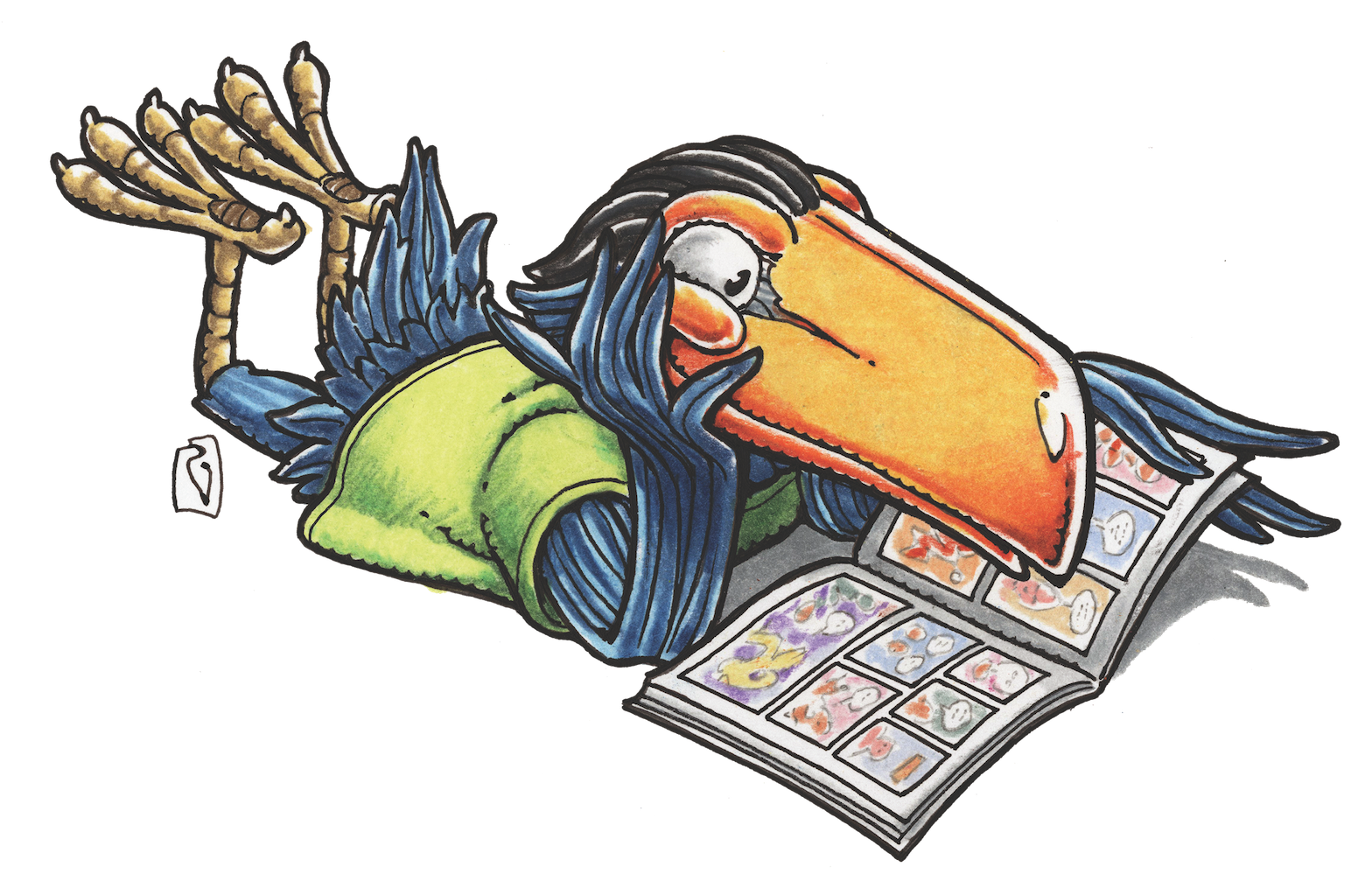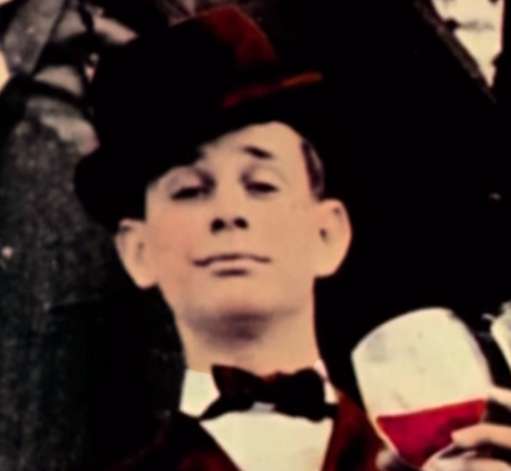JESSE HAMM’S CAROUSEL
Carousel 015: Common Sights


I once wrote a column here on how to draw EVERYTHING, but here are a dozen key things you’re likely to draw OFTEN. Whether you draw action, drama, humor, or any other genre, you’ll be called upon to draw these items again and again, so studying them now will save you hassle in long run. Hunt up several photos of each item and draw them until you’ve memorized them, so that you won’t have to look up reference later, in the middle of a job. When a deadline looms, and the script calls for this or that incidental element, it’s a relief to know that you can pull something attractive straight from your head, instead of searching around for the right photo at 2:00 AM.
1. FISTS
Our hands assume all sorts of different positions, but perhaps the most common of these is the fist—at least in comics! Comic book characters are always clenching their fist in determination or triumph, or just to punch someone in the face. Take photos of your fist from various angles, or find some online, and draw them until you feel comfortable doing so from memory. Study the fists of both men and women, since the thickness of the fist’s fingers will affect its appearance.
2. HANDS GRIPPING ITEMS
Characters hold things constantly, but this always seems to take artists by surprise. Face it: your characters are going to grasp objects. There are generally two ways we grasp an object: either we wrap our fingers around it (such as when holding a cup or the hilt of a sword), or we press it between our thumb and fingers (such as when holding a newspaper or clipboard). Find photos of each circumstance and draw those hand positions, and they won’t take you by surprise.
3. HORSES AND DOGS
A script may call upon you to draw all sorts of animals, from ant-eaters to zebras, but the most common animals in stories are those used as pets or transport—namely: dogs and horses! (Cats appear often, too, but their bones and muscles are less prominent, making them easier to fake.) A familiarity with horses in particular is invaluable when drawing tales set in pre-vehicular eras. For dogs, study some big and some small; a Doberman’s anatomy poses different challenges than that of a Maltese.
4. TREES
Trees occur in most settings, from the wilderness to the city, and they’re a great way to indicate the climate, cover up complicated buildings, or balance out a composition. There’s no easier way to fill out a scene than to pop in a quick tree here or there. Don’t content yourself with fluffy, made-up trees. Study a few common varieties (oak, fir, palm) to add authenticity to your backgrounds.
5. BODIES OF WATER
Life congregates near water, so you can expect bodies of water to occupy most of the places your characters visit. Fresh water, such as in ponds, lakes, and rivers, tends to lie flat and behave like a mirror, making it the easiest to draw. You can leave it mostly blank, reflecting the sky, and “mirror” into its edges the land that bounds it. Sea water tends to be more choppy and requires an understanding of how waves behave. Copying photos of sea water and fresh water will acquaint you with their respective textures, and help you invent ways to portray them that suit your style. Once you develop a shorthand for water’s waves and reflections, you can easily recycle it wherever water appears.
6. JACKET AND TIE
Formal wear and business clothes have defeated many a cartoonist. We’re happy to draw anything saggy or tight, but there’s something about the crisp geometry of a jacket, collared shirt, and tie that’s hard to master. I think this results from trying to invent shapes that must instead be copied. You can invent a summer dress or cape right from your head, but to draw a suit you need to have drawn a lot of suits from observation. So get busy! Somewhere in your future lurk bankers, lawyers, and FBI agents, waiting to be drawn.
7. TABLE AND CHAIR
Your characters will need to sit down sometime, and when they do, you’ll need to be ready! A fake-looking chair will undermine all the hard work you put into drawing the character herself. Familiarize yourself with some common chairs that might appear in a home or office setting—not so distinctive that they attract attention, but distinctive enough not to appear made-up. Tables, too, often accompany chairs: board room tables, dining tables, coffee tables. Sketch a few that you can use later to furnish various settings.
8. BLOSSOMS
Comics are full of scenes that need to appear festive or connote nature, and flower blossoms are a simple, attractive way to achieve that. Learn to draw two or three simple blossoms, and you can drop them into many scenes to add a little something extra. They can spruce up the background of any forest scene, garden, funeral, or wedding, or add a pleasing accent to a houseplant or vase, or a character’s hair or lapel.
9. PICTURE FRAMES
Wall space shows up constantly in comics backgrounds, and it threatens to look like blank paper unless something is hanging there to “tag” it as part of a room. This is where picture frames come in handy: Hang a couple of picture frames behind your characters, and that empty space will read as a wall, not as an area where you neglected to draw a background. The imagery inside the frame is irrelevant; since these are just background elements, you can scribble something random in there and it will read as a painting or photo. What sells it as a “picture” is the frame. Don’t just draw a square; real frames have depth and design. Find a few online, memorize how they look, and later you can toss them into any room to enliven the background.
10. HANDGUNS
Guns appear with surprising regularity in all sorts of stories and genres. Nothing gets a story moving like someone pulling out a gun! For war or spy stories, you may need a detailed knowledge of a variety of firearms, but most guns that appear in fiction are nondescript … the kind thugs pull out to squeeze off a couple shots before escaping down a dark alley. You don’t want to spend all day researching such an incidental prop, so find photos of a handgun from a couple of different angles (side-view and three-quarter), draw them until you memorize the basic lines and shapes, and that should serve you well enough when they appear.
11. ARMS FOLDED, HANDS ON HIPS
Characters standing around with their arms hanging at their sides can appear lifeless, but gesturing in every panel will make them look hyper. A happy compromise is to draw characters with their arms folded occasionally, or with one or both hands resting on their hips. This requires practice to look natural; readers will notice if your characters’ limbs don’t “sit” right. Study photos of people with their arms folded, or their hands on their hips, and be sure to study both men and women, since these poses hang differently on their different frames.
12. WINDOWS
Unless you’re drawing a drinking establishment, every building you draw will have windows. Most rooms, too, will have a window in at least one wall. Don’t trust yourself to invent windows without first studying the real thing; a mere glass rectangle in the wall will appear fake. Generally, these are the types of window you’ll need: house (double-hung sash, with shudders and drapes), modern office (fixed and mostly glass), apartment (sliding sash), and old-fashioned (multi-paned casement window). After you’ve drawn several from photos, you’ll be able to invent convincing variations for any background.
So ends my list! Yours may differ in places, but I suspect overall it will be similar. Whatever your list, the key is to anticipate those common items, and not to let them sandbag you again and again.
Good luck, and see you here next month!